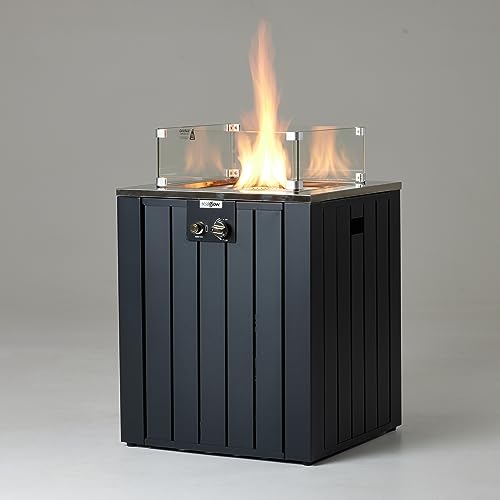15 Terms Everybody Within The Patio Heating Systems Industry Should Know
Patio Heating Systems: A Comprehensive Guide
As outdoor living areas develop into extensions of our homes, producing a comfy and inviting atmosphere is vital. One of the most reliable ways to attain this comfort is by implementing patio heating unit. These systems enable households and friends to enjoy their outdoor areas year-round, regardless of the chill of the night air. This post will explore numerous patio heating systems offered, their features, benefits, and important factors to consider for picking the ideal one.
Kinds Of Patio Heating Systems
Patio heater been available in numerous forms, each with its own special qualities. Below are some of the most common types:
Type
Description
Pros
Cons
Electric Patio Heaters
These heaters run utilizing electrical power and be available in wall-mounted, portable, and freestanding designs.
Easy to install and utilize; instant heat; safe; low upkeep
Restricted heat variety; might increase electricity costs
Gas Patio Heaters
Generally powered by propane or natural gas, gas patio heaters provide substantial heat output and can cover large areas.
High heat output; can last longer than electric models; suitable for huge gatherings
Requires gas supply; can be less portable; security interest in gas leakages
Infrared Heaters
Infrared heaters release thermal radiation that directly warms items and people instead of the surrounding air.
Efficient; immediate heat; minimal heat loss; eco-friendly options available
Restricted location of result; initial expense might be high
Fire Pits
Frequently made from stone or metal, fire pits offer warmth and ambiance, producing a cozy environment.
Natural ambiance; versatile (cooking choice); gather around for social interactions
Security threats with open flame; require wood or propane supply
Patio Umbrellas with Heaters
These are umbrellas fitted with built-in heating elements, perfect for shaded locations.
Convenient; combines shade and heating; portable
Less effective in windy conditions; restricted location; can be expensive
Secret Features to Consider
When choosing a patio heating system, it is important to evaluate various features based upon individual preferences, spending plan, and outdoor space requirements. Here are some aspects to think about:
Heating Capacity: Measured in BTUs (British Thermal Units), this identifies the heat output of the heater. Select a heater with appropriate BTUs for your outdoor size.
Fuel Type: Decide between electric, gas, or wood-burning options based upon benefit, schedule, and effectiveness.
Portability: If mobility is vital, try to find light-weight or wheeled designs for simple transport.
Maintenance: Consider the upkeep needed for each type. Electric heaters usually require less maintenance than gas or wood options.
Safety Features: Look for systems with safety cut-offs, protective screens, and products that can withstand outdoor conditions.
Advantages of Patio Heating Systems
Patio heater use numerous benefits, making it possible for homeowners to optimize making use of their outdoor living areas. Some advantages include:
- Extended Outdoor Use: Heaters enable more time spent outside, even throughout cooler seasons.
- Increased Comfort: Provide a warm and welcoming environment for gatherings, celebrations, or peaceful evenings.
- Boosted Aesthetics: Many heater styles add a stylish touch to outdoor decoration.
- Increased Property Value: Homes with fully equipped outdoor areas might draw in greater worth and attract possible purchasers.
- Versatile Options: With various design and styles available, there is a heating solution for every single kind of outdoor setting.
Frequently Asked Questions About Patio Heating Systems
1. How much does it cost to run a patio heater?
- Electric Models: This depends on the local electrical power rates and use time. Typically, running an electric heater can cost in between ₤ 0.10 to ₤ 0.50 per hour.
- Gas Models: Propane expenses vary, but a 20-pound tank generally lasts about 8-10 hours, costing around ₤ 20-₤ 30 to fill.
2. Are patio heaters safe to use?
The majority of modern patio heaters are designed with security functions. However, Weatherproof Heaters to follow safety protocols, such as adhering to clearances from combustible items, utilizing on stable surfaces, and guaranteeing appropriate ventilation for gas designs.
3. Do patio heaters operate in windy conditions?
Most patio heaters can provide heat in light winds, however strong gusts can reduce their effectiveness and security. For high-wind locations, consider more stable models or utilize wind shields.
4. Can I utilize a patio heater inside?
Using outdoor heaters inside is not advised due to carbon monoxide gas dangers, especially with gas heaters. Always verify your heater's designated usage guidelines before installation.
5. How do I keep my patio heater?
Routine upkeep is essential to make sure durability and performance:
- For electrical heaters, check and clean the heating component regularly.
- Gas heaters should have their gas lines inspected for leaks and filters cleaned up.
- Fire pits ought to be cleaned after use and looked for any residue or ash buildup.
Patio heater play an essential role in transforming outdoor spaces into comfy and inviting environments. With a range of options, each with distinct advantages and functions, house owners can choose the ideal system based on their needs, preferences, and particular outdoor conditions. By investing in a trusted patio heater, one can take full advantage of satisfaction of their outdoor space throughout the year. Whether hosting summer barbecues or cozying up on cool nights, a warmed patio welcomes togetherness, relaxation, and satisfaction, making it a valuable addition to any home.
